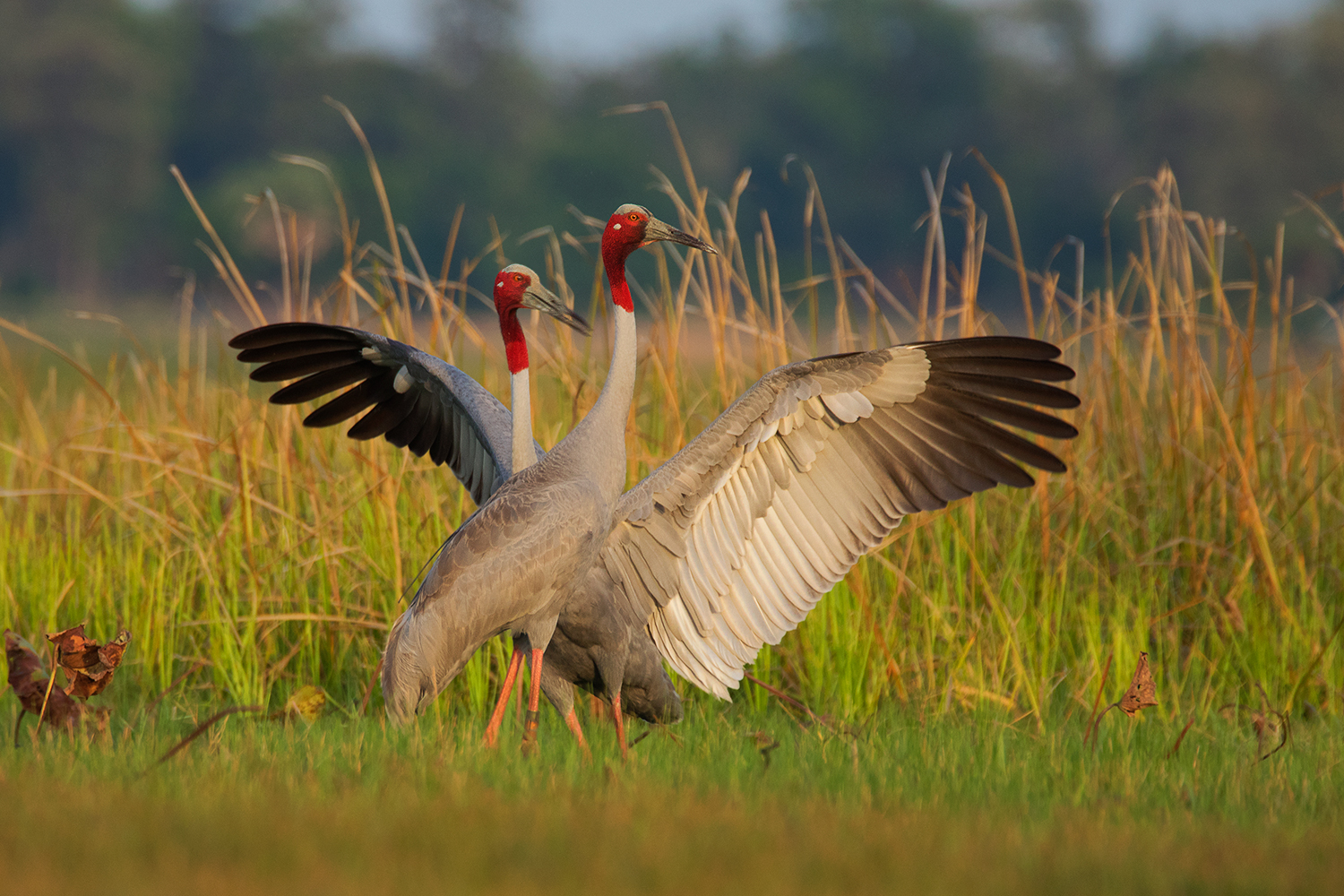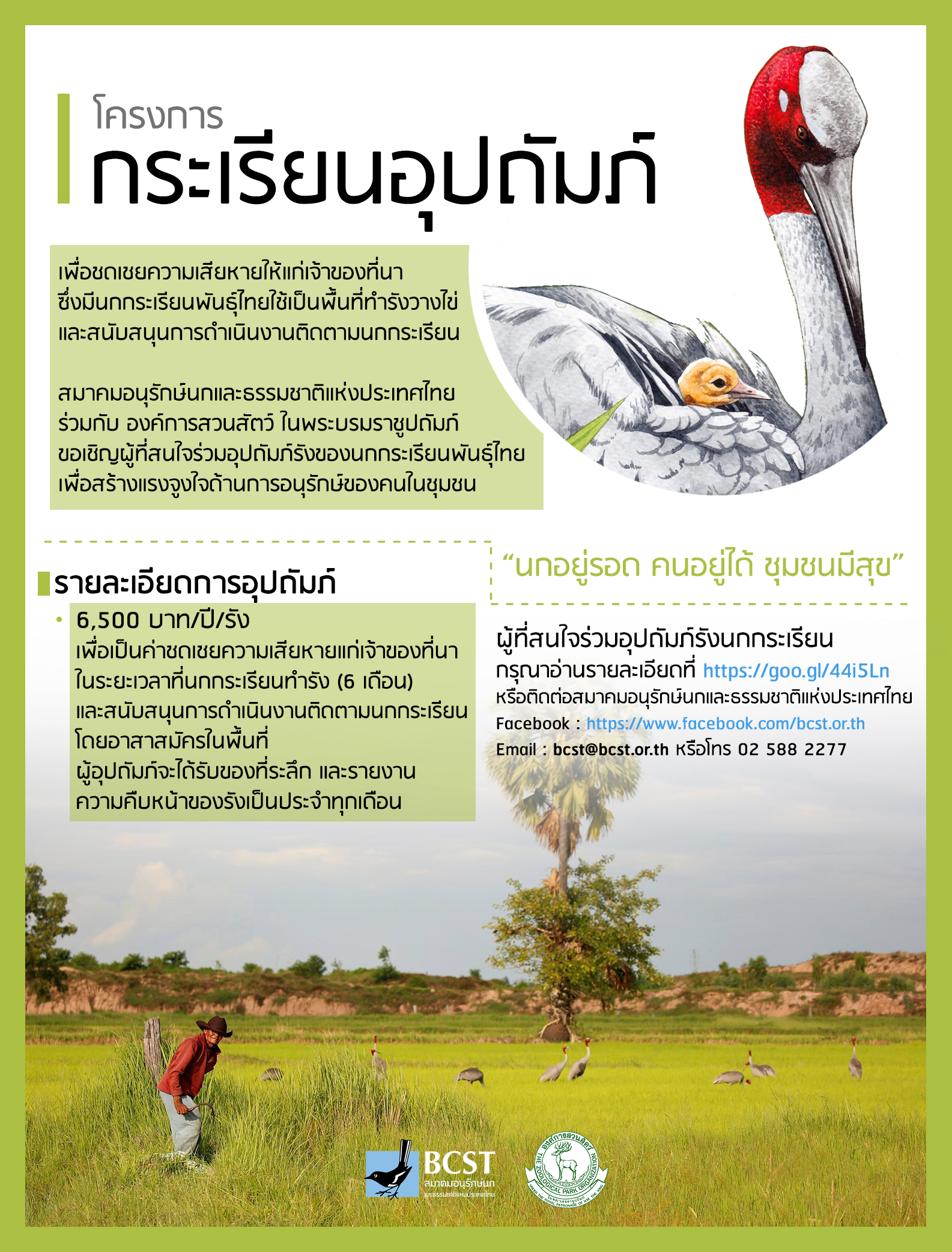Sarus Crane (Antigone antigone) has three disjunct populations in the Indian subcontinent, South-East Asia (occurs in Myanmar, Laos, Vietnam and Cambodia) and northern Australia. Unlike most of other species of cranes which migrate long distance between breeding and wintering grounds, Sarus Crane are residential or regarded as “short-distant migrant”. The Eastern Sarus Crane population decreased drastically due to water diversions and unsustainable conversion of wetlands, habitat loss, and other threats such as poisoning, human disturbance, collisions with power lines, invasive species and changing agricultural practices. Sarus Crane was extinct in Thailand in 1980s. In the past 10 years, reintroduction programme was established to release the species back to natural habitats in Thailand.

Sarus Cranes © Ayuwat Jearwattanakanok
Wet season is the breeding season for Sarus Crane (Antigone antigone) and a busy time for growing rice. Due to success of the reintroduction programme in Buriram by the Zoological Park Organization of Thailand (ZPOT), Sarus Crane has come back from the brink of extinction and started to nest and breed once again in the wild. Since 2011, Sarus Cranes have been reintroduced at two major sites in Buriram. These sites are 1) Sanambin Reservoir, and 2) Huai Chorakhe Mak Reservoir. Since 2016, these reintroduced birds have begun producing offspring annually in the wild.
These majestic waterbirds mostly nest, forage and rear their chicks in rice fields during wet season. Due to their large size, the nest can occupy quite a significant area of rice field, affecting the productivity of the crops. The birds also forage in large area of rice fields, particularly when rearing the chicks. In order to prevent conflicts between the birds and farmers, whose portion of their crops are lost to the nest, (Bird Conservation Society of Thailand (BCST)and ZPOT had jointly established a “Sarus Crane Nest Adoption” project to help accomplish the following objectives:
- Support funding for Sarus Crane conservation activities such as nest-monitoring by volunteers in Buriram
- Compensate farmers whose rice fields are chosen by the Sarus Cranes as the nesting site
- Encourage local people to engage in Sarus Crane conservation
- Provide incentives for local people and farmers whose rice fields are used as the nesting site to become supportive of Sarus Crane conservation
BCST and ZPOT have carried out the nest adoption programme since 2018. Since then, 22 nests were adopted, and more than 15 chicks have hatched in the wild. The support from the nest adoption programme has enabled the crucial data collection, while encouraging farmers to report the finding of nests and welcome the presence of the cranes in their rice fields.
Please visit the following link to help with the adoption >>https://goo.gl/44i5Ln
Note* Partial support is also welcomed but the supporter will not receive the progress reports.

Contact BCST at bcst@bcst.or.th or via Facebook (https://www.facebook.com/bcst.or.th)




